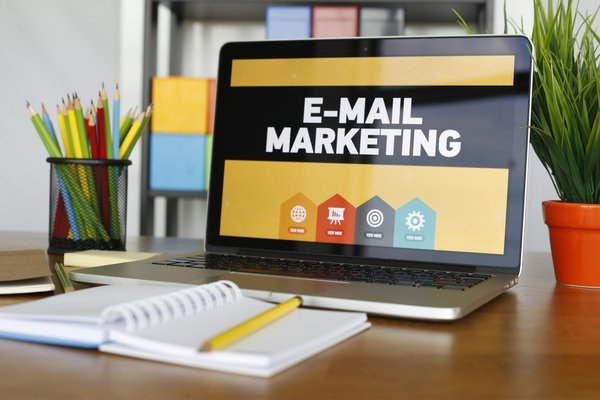This post originally appeared on tBL member Joshua Lyon’s blog Joshua Lyons Marketing Blog and is republished with permission. Find out how to syndicate your content with theBrokerList.

In modern times, social media marketing and content marketing is gaining more attention and popularity. However, what people may not realize is that email marketing is still often the most effective messaging channels used. Email marketing is “the highly effective digital marketing strategy of sending emails to prospects and customers.”
Nowadays, people are always on some sort of device. Whether it be a tablet, smart-phone or laptop—digital platforms are being used 24/7. Even though email is an old digital marketing channel, it is still used every day from companies, businesses and individuals. It’s a form of communication that is professional, quick and effective—which is why it’s still around and a worthwhile marketing strategy.

Did you know that email generates an average of $38 for every one dollar spent? That equals a 3,800% ROI, which is one of the most effective options available today. If you’re not sure what exactly that means—here are more email marketing statistics that show the effectiveness of email marketing.
Email Marketing Statistics
There are 3.9 Billion Daily Users For Email
Who knew so many internet users use their email every day? Statista reports that daily email users are expected to rise to 4.3 billion by 2023. Just in 2019, active email accounts surpassed 5.6 billion.
In 2024, 4.48 Billion People Will Use Email
Another figure from Statista is the expected number of users for 2024. A whopping 4.48 billion people will use email in just a few years. This figure shows how important it is to focus on email marketing. When you start now, you will be prepared for 2024 when email usage is a much larger number.
Mobile Phones Account For 46% of All Email Opens
Mobile devices may surpass desktops for emailing soon. In 2018, 46% of all emails were opened on mobile devices. This number could likely be higher today. Additionally, 35% of business professionals check their email on a mobile device and 73% of millennials prefer communications from businesses to come via email.
Mobile devices make it much more efficient to check emails on the go. The iPhone is the most popular mobile device to read emails on—estimating 29% of all opens. Gmail is the second most popular platform to check email, sitting at 27%. People are more likely to open an email on their phone rather than on a desktop. Several factors determine who will open what email, and those factors are age, geolocation, industry and type of email. Out of the ages 18 and younger, 40% will open an email first on mobile. This is due to the mobile email trends in the younger generations. However, between the ages of 19-34—28% of readers will open it on a phone first.
Are you enjoying this post? If so, be sure to subscribe for occasional email updates from our team!
294 Billion Emails Were Sent Every Day in 2019.
Did you know over 294 billion emails are sent every day? This number is very difficult to even wrap your mind around because it is so large. But, this number is only growing. In 2022, this number will be around 347 billion. It’s clear this marketing platform is only growing, and it’s not going anywhere. With most marketing tactics, popularity and success will come and go. But email marketing has always been effective, when done well.
 People Receive Three Time More Emails Than They Send
People Receive Three Time More Emails Than They Send
The ratio for receiving and sending emails is 3:1. For those who rarely send emails, this may be surprising. When you take into account the marketing emails you receive, as well as work emails, this makes sense. With marketers, 35% send their customers three to five emails per week. So, this can account for most of the emails you receive.
How Do Marketers Use Email Marketing?
78% of marketers have seen an increase in email engagement in the past year and those who use segmented campaigns note as much as a 760% increase in revenue. Email marketing can influence the purchase decisions of customers. 59% of respondents agree with this statement. While 80% of business professionals believe that email marketing increases customer retention as well.
Email marketing can be anything from newsletters, shopping deals/sales, invitations, events and professional emails regarding interviews, clients, jobs, etc. 81% of B2B marketers say that their most used form of content marketing is newsletters. Hundreds of emails come to an inbox daily, so many times emails get lost—especially in spam or junk mail. According to Email Tool Tester, 16% of all emails never make it into the inbox.
“47% of all people across demographics use a mobile application for checking their email. Meanwhile, 26.9% still prefer desktop,” according to Campaign Monitor, “When it comes to mobile devices, a whopping 81% prefer to open emails on their smartphones while 21% open emails on their tablets.” As Generation Z and millennials are focused on technology and digital communications, you’ll find a higher number of them using smartphones and the older generations using a desktop.
Related Blog Posts:
What Do These Email Marketing Statistics Mean For You?
In a shorter version, this data shows that marketers need to make a responsive design a priority to drive the best outcomes for their campaigns. Since opening emails on a smartphone is now more common, marketers should focus on how to utilize those tools to connect with their existing and prospective customers. Readers like quick finds and short-phrased emails—be concise and bold when creating an email. Create compelling content and information that will make the reader more amused and influenced to want to check out what the email is offering.

 People Receive Three Time More Emails Than They Send
People Receive Three Time More Emails Than They Send

